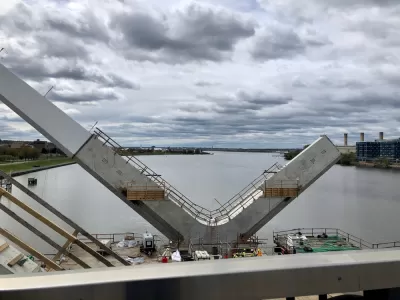A wonky policy tool can have significant effects on how public and private money is spent.

Writing in Vox, Kelsey Piper explains an obscure policy tool, set by the federal Office of Management and Budget (OMB), whose impacts can reverberate across generations. “The discount rate basically tells us how to value the future versus the present — and thus has tremendous implications for the policies we enact today,” Piper writes.
High discount rates mean that we, as a society, are willing to trade off the future for the present: that we’ll generally prefer policies that benefit us now over policies with long-term benefits that won’t be realized immediately. Low discount rates mean that we, as a society, are willing to make investments that won’t be realized for a long time.
By proposing to lower the discount rate from 3 percent to 1.7 percent recently, the OMB is essentially putting more value on future returns. According to Piper, this small change could have a major impact on how money is spent. Piper uses carbon as an example. “Just a small shift to a lower discount rate significantly changes what trade-offs we are willing to make — because with a lower discount rate, we care more about the effects of carbon on the world our grandchildren live in.”
See the source article for a detailed explanation of how the discount rate works and other new information in the OMB’s recent analysis.
FULL STORY: The one number that determines how today’s policies will affect our grandchildren

Maui's Vacation Rental Debate Turns Ugly
Verbal attacks, misinformation campaigns and fistfights plague a high-stakes debate to convert thousands of vacation rentals into long-term housing.

Planetizen Federal Action Tracker
A weekly monitor of how Trump’s orders and actions are impacting planners and planning in America.

San Francisco Suspends Traffic Calming Amidst Record Deaths
Citing “a challenging fiscal landscape,” the city will cease the program on the heels of 42 traffic deaths, including 24 pedestrians.

Defunct Pittsburgh Power Plant to Become Residential Tower
A decommissioned steam heat plant will be redeveloped into almost 100 affordable housing units.

Trump Prompts Restructuring of Transportation Research Board in “Unprecedented Overreach”
The TRB has eliminated more than half of its committees including those focused on climate, equity, and cities.

Amtrak Rolls Out New Orleans to Alabama “Mardi Gras” Train
The new service will operate morning and evening departures between Mobile and New Orleans.
Urban Design for Planners 1: Software Tools
This six-course series explores essential urban design concepts using open source software and equips planners with the tools they need to participate fully in the urban design process.
Planning for Universal Design
Learn the tools for implementing Universal Design in planning regulations.
Heyer Gruel & Associates PA
JM Goldson LLC
Custer County Colorado
City of Camden Redevelopment Agency
City of Astoria
Transportation Research & Education Center (TREC) at Portland State University
Jefferson Parish Government
Camden Redevelopment Agency
City of Claremont





























